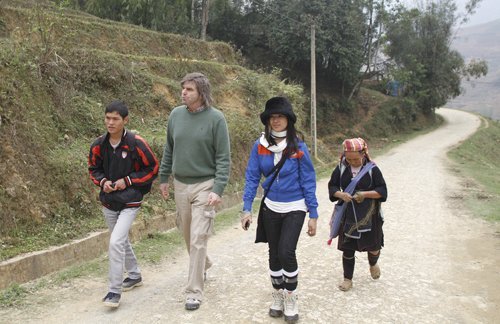VietNamNet Bridge – Homestay services have been provided at all key tourism
sites throughout the country. However, experts have pointed out that Vietnam
still does not have “homestay” services, and what it is providing now is just
called “housestay”.

Homestay is a form of tourism that allows travelers to live together with the
landlords as members of the landlords’ families. By joining the daily life of
the local families, travelers can better learn the local lifestyle, improve
their language ability, and experience the life and culture values of the land
where travelers set foot in.
Therefore, Vi Thanh Nam, Director of Amazing travel firm, stressed that homestay
is a complete tourism product, not just an accommodation service. Only when
travelers can mix with the local people, joining their daily activities from
eating, living to working, will they actually experience the homestay tourism.
Therefore, Nam believes that the service provided to foreign travelers now in
Vietnam should be called “housestay”, i.e. travelers live together with local
people at their houses, instead of ”homestay”, i.e. they live and join the daily
life of local people.
Staying at local people’s houses or having meals there is just like renting a
room to stay during the travel period. However, this is not enough to give
travelers the opportunities to learn better about the traditional customs and
habits and the core values of the land they want to discover during their trips.
Also according to Nam, besides Hue ancient capital city and Hoi An ancient town
in Quang Nam province, other homestay points just provide the lodging,
accommodation services. Here travelers are treated as the guests. They go out on
daytime, do sightseeing, take pictures and look at the local people’s life. The
travelers are served specific meals, while travelers do not have meals together
with the landlords.
A French TV channel once reported a homestay tour to Vietnam of a French man.
When visiting Lo Lo minority ethnic people in the north of Vietnam, the guest
had a real homestay tour that could be the dream of every traveler. He lived in
a house on stilts, lied on the floor, not on bed with mattress, ate rice with
dried fish, ploughed on the rice field, transplanted rice seedlings, cooked mash
for pigs and went to market to sell maize.
However, Nam admitted that it is really not easy to develop homestay services,
while it is much easier and less costly to develop housestay services. That
explains why housestay services have been developing rapidly.
Local authorities determined to develop real homestay tourism
Nguyen Duc Thanh, Secretary of the Communist Party’s Committee of the Co To
island district, admitted that real homestay services have not existed. “We have
been preparing for the last three years to launch homestay services, and we need
one more year for the work,” he said.
Thanh, who has been visiting many homestay service points in Vietnam and other
countries, said he has deep knowledge about the specific tourism form.
He believes that home comforts would not be a big problem, because when choosing
homestay tourism, travelers understand that they would have to accept the
material facilities conditions at the minimum level. The most important factor
in developing homestay tourism is the behavior of landlords.
He also said that it is very difficult to persuade local people to provide
homestay services. They would feel inconvenient when living together with
strangers, which may upset their lives. Besides, they would have to learn
foreign languages in order to communicate with foreign travelers and get more
knowledge.
To Quoc
- © Copyright of Vietnamnet Global.
- Tel: 024 3772 7988 Fax: (024) 37722734
- Email: evnn@vietnamnet.vn